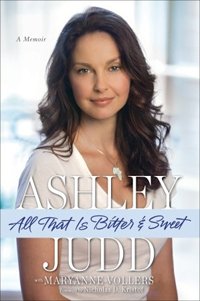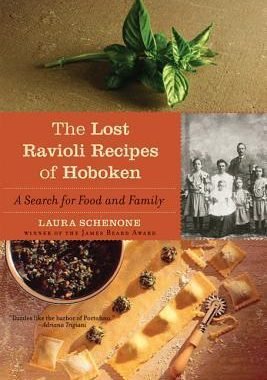Fifth Avenue, 5 A.M.: Audrey Hepburn, Breakfast at Tiffany’s, and the Dawn of the Modern Woman by Sam Wasson | Book Review
 Fifth Avenue, 5 A.M.: Audrey Hepburn, Breakfast at Tiffany's, and the Dawn of the Modern Woman by Sam Wasson
Fifth Avenue, 5 A.M.: Audrey Hepburn, Breakfast at Tiffany's, and the Dawn of the Modern Woman by Sam Wasson Genres: Non-Fiction
Original Publication Date: 2010
Source: I purchased this book
Goodreads
Find the Author: Website, Goodreads, Amazon

In Fifth Avenue, 5 A.M., Sam Wasson immerses us in the America of the late fifties, before Woodstock and birth control, when a not-so-virginal girl by the name of Holly Golightly raised eyebrows across the nation, changing fashion, film, and sex, for good. But that was the easy part. Getting Audrey there—and getting the right people behind her—was the tough part. With the heart of a novelist and the eye of a critic, Wasson delivers us from the penthouses of the Upper East Side to the pools of Beverly Hills, from script to screen, and from rehearsal to “Action!”
Fifth Avenue, 5 A.M.: Audrey Hepburn, Breakfast at Tiffany’s, and the Dawn of the Modern Woman is Sam Wasson‘s examination of the iconic film Breakfast At Tiffany’s, and why that was a key film in the changing of women’s roles in modern society.
Table of Contents
Breakfast at Tiffany’s Is A Key Film
Breakfast at Tiffany’s was originally a novella written by the talented Truman Capote. In Holly Golightly, Capote created a new woman and one of the most original characters in modern fiction. She was free-spirited and made no apologies for being a sexually active woman.
Capote envisioned Marilyn Monroe in the lead role in the film adaptation. But the producers didn’t see it that way. They knew the character would need to be toned down a bit for the film, and they wanted someone more . . . refined.
Audrey Hepburn Became Iconic As Holly Golightly
Audrey Hepburn is a modern icon, but how did she get that way?
Fifth Avenue, 5 A.M. explains some of the reasons why this happened.
She made several very successful movies in the 1950s, including Roman Holiday, Sabrina, and Funny Face. In all these films she is charming but always a lady.
Hepburn found her fashion muse in Hubert de Givenchy, who created the wardrobes for several of her films, including her iconic “little black dress” in Breakfast at Tiffany’s.
The opening credits set the scene for the film (and for the cover of the book). It is early morning and Holly Golightly is wearing a long black dress. She has obviously been out all night.
This dress came to be seen by young women as liberating. This dress wasn’t girlish or sweet – it was sexy.
Hepburn was nervous about making the film because she was uneasy about Holly Golightly’s character – amoral, essentially a hooker.
Hepburn was intensely aware of her stature of classy refinement – she first made a splash playing a European princess in Roman Holiday.
The Cast And Crew Worked Hard To Produce A Classic Film
Henry Mancini had written scores for television but was determined to write a score for this film. He was turned down but eventually wrote the film’s theme song (with lyrics by Johnny Mercer), “Moon River.”
George Axelrod had written the play and film The Seven Year Itch but was determined to write Tiffany’s. The play was considered smutty, and no one considered Axelrod the right writer to pen such a classy film. He eventually did write the script for the film.
All of these factors came together in the making of Breakfast at Tiffany’s, which in retrospect is a landmark film. You can’t imagine the movie without Hepburn, “Moon River”, or the little black dress.
This film was made at a time when filmmaking was still a labor of love – it wasn’t just about making the latest blockbuster or having the most special effects.
The movie was made in 1960 – the same year the birth control pill was approved for use in the United States – and released in 1961. The beginning of the sexual revolution had begun.
In Fifth Avenue, 5 A.M., Wasson’s theory is that this film had a profound impact on young women at that time. Even if young women watching the film didn’t want Holly’s “profession” – they wanted a real career – they admired her liberated spirit.
This new generation of young women wanted to have a fun, glamorous, slightly hedonistic existence of which they were in charge– and not have to apologize for it.
Wasson brings all of these disparate threads together to tell a fascinating story of how the movie came to be made and how everything eventually came seamlessly together. The film has become essential viewing, especially by young women. This is the film for which Audrey Hepburn is best remembered.
Final Analysis
I loved Fifth Avenue, 5 A.M. because I love the film and Audrey Hepburn and was interested in how the movie came to be and why it has become such an important film that even the young women of today love Audrey Hepburn and know this film.
Wasson has done a fine job of research, talking to some of the participants involved, and is obviously devoted to the subject. He has written a previous biography of Breakfast At Tiffany’s director, Blake Edwards.
I recommend this book if you love movies, Truman Capote, Audrey Hepburn, and Breakfast at Tiffany’s.
You can check out Sam Wasson’s page for this book here.
You can also read my reviews:
Dutch Girl: Audrey Hepburn and World War II by Robert Matzen
Summer at Tiffany by Marjorie Hart.
Thank you for reading The Literary Lioness!




